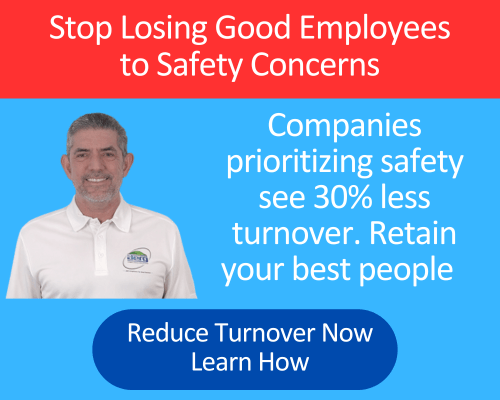How Manufacturers Can Overcome Labor Shortages
The manufacturing sector faces an unprecedented challenge in attracting and retaining skilled workers. As competition intensifies for qualified personnel, companies are discovering that workplace safety has become a decisive factor in talent acquisition. Today’s manufacturing professionals, particularly younger generations entering the workforce, prioritize their well-being and seek employers who demonstrate genuine commitment to employee safety. This shift represents more than just regulatory compliance—it’s about creating an environment where workers feel valued and protected.
In our experience working with manufacturers across the country, we’ve observed that companies with robust safety programs consistently outperform their competitors in recruitment and retention. The correlation between comprehensive safety initiatives and workforce stability is undeniable. When manufacturers invest in OSHA compliance training and environmental health safety programs, they signal to potential employees that their organization values human capital above all else. This commitment resonates strongly with skilled workers who have multiple employment options in today’s competitive market.
1. The Psychology Behind Safety-First Job Selection
Modern manufacturing workers approach job selection with a sophisticated understanding of workplace risks and employer responsibilities. They research companies thoroughly, examining safety records, OSHA compliance history, and employee testimonials before making career decisions. This due diligence reflects a fundamental shift in worker priorities, where long-term health and safety considerations outweigh short-term financial incentives.
Skilled professionals recognize that working for safety-conscious employers protects their career longevity and personal well-being. They understand that workplace injuries can derail careers and impact families, making safety programs a non-negotiable requirement. Companies that demonstrate proactive safety leadership through comprehensive EHS programs and regular training programs naturally attract these discerning candidates.
The psychological comfort of knowing one’s employer prioritizes safety creates a foundation of trust that extends beyond the workplace. This trust translates into higher job satisfaction, increased loyalty, and stronger employee advocacy—factors that significantly impact recruitment success through word-of-mouth recommendations.
| Safety Priority Factors | Impact on Job Selection |
|---|---|
| OSHA Compliance Record | High influence on decision |
| Safety Training Programs | Moderate to high influence |
| Injury Prevention Measures | High influence on decision |
| Leadership Safety Commitment | Critical decision factor |
2. How Safety Programs Signal Company Values
A comprehensive safety program serves as a powerful indicator of organizational values and management philosophy. When manufacturers implement rigorous OSHA standards and maintain EPA and TCEQ regulatory expertise, they communicate their commitment to excellence in all operational aspects. This attention to detail and regulatory compliance suggests that the company operates with integrity and professionalism across all business functions.
Top-tier manufacturing professionals recognize that companies prioritizing safety typically maintain higher operational standards, invest in employee development, and demonstrate long-term thinking. These characteristics align with career-minded individuals seeking stable, growth-oriented employment opportunities. Safety-focused organizations often provide better training, clearer procedures, and more supportive work environments.
The visibility of safety investments—from modern equipment to comprehensive training programs—creates tangible evidence of company values. When potential employees tour facilities and observe safety protocols in action, they gain confidence in the organization’s commitment to their well-being and professional development.
3. The Competitive Advantage of Safety Leadership
Manufacturing companies that establish themselves as safety leaders gain significant competitive advantages in talent acquisition. These organizations become known within industry networks as preferred employers, creating a pipeline of qualified candidates who actively seek opportunities with safety-conscious companies. This reputation reduces recruitment costs and time-to-fill positions while improving candidate quality.
Safety leadership also attracts passive candidates—skilled workers who aren’t actively job searching but would consider opportunities with exceptional employers. These individuals often represent the highest caliber of manufacturing talent, bringing valuable experience and expertise to organizations that demonstrate superior safety standards.
Manufacturers with strong safety reputations can command premium positioning in the talent marketplace. They attract candidates willing to relocate or accept competitive compensation packages because of the perceived value of working in a safe, well-managed environment.
| Safety Leadership Benefits | Talent Acquisition Impact |
|---|---|
| Industry Recognition | Attracts passive candidates |
| Employee Referrals | Higher quality applicants |
| Reduced Turnover | Lower recruitment costs |
| Positive Reputation | Faster position filling |
4. Financial Incentives of Safety-Conscious Employment
Beyond the obvious health and safety benefits, working for safety-focused manufacturers provides significant financial advantages that attract top talent. Companies with strong safety records typically offer better insurance benefits, lower healthcare premiums, and reduced out-of-pocket medical expenses for employees. These financial benefits can represent substantial value over the course of a career.
Safety-conscious employers also tend to offer more comprehensive benefits packages, including disability insurance, wellness programs, and family support services. These benefits reflect the organization’s understanding that employee well-being extends beyond the workplace and encompasses overall life quality.
Additionally, workers at safety-focused companies experience fewer work-related injuries, reducing personal financial risks associated with medical expenses, lost wages, and potential career disruptions. This financial security becomes increasingly important as workers consider long-term career decisions and family planning.
5. Career Development in Safety-Focused Organizations
Manufacturing professionals recognize that companies prioritizing safety typically invest more heavily in employee development and training. Organizations committed to environmental health safety programs often provide extensive professional development opportunities, including specialized certifications, leadership training, and cross-functional skill development.
Safety-focused manufacturers tend to promote from within more frequently, as they value employees who understand and embody the company’s safety culture. This internal promotion tendency creates clear career advancement pathways that attract ambitious professionals seeking long-term growth opportunities.
The emphasis on continuous improvement inherent in strong safety programs translates into organizational cultures that value learning, innovation, and professional development. These environments naturally attract high-performing individuals who thrive in challenging, growth-oriented settings.
| Career Development Factors | Safety-Focused Companies |
|---|---|
| Training Investment | Above industry average |
| Internal Promotions | Higher frequency |
| Skill Development | Comprehensive programs |
| Leadership Opportunities | Merit-based advancement |
6. The Role of Technology in Modern Safety Programs
Today’s manufacturing talent expects employers to leverage modern technology for safety management and compliance. Companies utilizing advanced safety management systems, digital training platforms, and real-time monitoring tools demonstrate their commitment to innovation and employee protection. These technological investments signal that the organization stays current with industry best practices and regulatory requirements.
Advanced safety technology also creates more engaging work environments where employees feel empowered to contribute to safety improvements. Digital platforms enable better communication, faster incident reporting, and more effective training delivery—factors that enhance job satisfaction and employee engagement.
The integration of technology in safety programs often extends to other operational areas, creating more efficient and productive work environments. This technological sophistication attracts skilled workers who want to work with modern equipment and systems that enhance their professional capabilities.
7. Building Trust Through Transparent Safety Communication
Transparent communication about safety performance, incidents, and improvement initiatives builds trust with both current and prospective employees. Companies that openly discuss safety metrics, share lessons learned, and involve employees in safety planning demonstrate authentic commitment to workplace protection.
This transparency extends to recruitment processes, where safety-focused companies proactively discuss their safety programs, training requirements, and performance expectations. Candidates appreciate this upfront communication as it demonstrates organizational integrity and helps them make informed career decisions.
Regular safety communications, including newsletters, safety committee meetings, and training updates, keep safety at the forefront of organizational consciousness. This consistent messaging reinforces the company’s values and creates a culture where safety discussions are welcomed and encouraged.
8. The Impact of Leadership Commitment on Talent Attraction
Visible leadership commitment to safety programs significantly influences talent attraction and retention. When executives participate in safety training, conduct facility walks, and personally engage with safety initiatives, they demonstrate authentic commitment that resonates with potential employees.
Leadership involvement in safety programs also indicates organizational stability and long-term thinking—qualities that attract career-minded professionals seeking stable employment opportunities. Companies where leadership actively champions safety typically maintain lower turnover rates and higher employee satisfaction scores.
This leadership commitment often extends to other areas of employee welfare, including professional development, work-life balance, and compensation fairness. The correlation between safety leadership and overall employee treatment makes these organizations particularly attractive to top talent.
| Leadership Safety Indicators | Talent Attraction Impact |
|---|---|
| Executive Participation | High credibility factor |
| Resource Allocation | Demonstrates commitment |
| Personal Engagement | Builds employee trust |
| Long-term Investment | Signals stability |
9. Regional Advantages in Safety-Conscious Markets
In manufacturing regions like Texas, companies with strong safety programs gain additional competitive advantages due to local industry dynamics and regulatory environments. These markets often have established networks of safety professionals and organizations that recognize and promote safety excellence.
Regional safety initiatives, industry associations, and regulatory support create environments where safety-conscious companies can leverage additional resources and recognition. This regional support enhances their ability to attract talent from both local and national markets.
The concentration of manufacturing activity in Texas also creates opportunities for safety-focused companies to collaborate with suppliers, customers, and industry partners who share similar values. These relationships often lead to referrals and recommendations that enhance talent acquisition efforts.
10. Measuring the Return on Safety Investment
Companies that invest in comprehensive safety programs can measure their return through improved talent acquisition metrics, including reduced time-to-fill positions, lower recruitment costs, and higher candidate acceptance rates. These measurable benefits demonstrate the financial value of safety investments beyond traditional cost-avoidance calculations.
The correlation between safety investment and talent quality is particularly evident in specialized manufacturing roles where skilled workers have multiple employment options. Companies with strong safety reputations consistently attract higher-caliber candidates who contribute to improved operational performance and innovation.
Long-term retention benefits of safety programs compound over time, creating sustainable competitive advantages in talent management. Organizations that maintain consistent safety excellence build reputations that attract talent for decades, reducing ongoing recruitment challenges and costs.
Conclusion
The evidence is clear: manufacturing companies with robust safety programs possess a significant advantage in attracting and retaining top talent. As the competition for skilled workers intensifies, safety excellence has evolved from a regulatory requirement to a strategic business imperative. Organizations that recognize this shift and invest accordingly will continue to attract the best manufacturing professionals while building sustainable competitive advantages in their markets.
FAQ
Q: How quickly can a manufacturing company see talent acquisition benefits from implementing a comprehensive safety program?
A: In our experience working with manufacturers, companies typically begin seeing improved candidate interest within three to six months of implementing visible safety improvements. However, building a strong safety reputation that significantly impacts talent acquisition usually takes twelve to eighteen months of consistent program execution and communication.
Q: What specific safety program elements are most important to manufacturing job candidates?
A: Based on our work with Texas manufacturers, candidates prioritize OSHA compliance training programs, visible leadership commitment to safety, modern safety equipment and technology, and transparent communication about safety performance. Companies promoting comprehensive EHS programs and regular safety training tend to attract the highest quality candidates.
Q: How can smaller manufacturing companies compete with larger organizations in safety program development?
A: Smaller manufacturers can leverage specialized EHS consulting services to develop comprehensive safety programs without the overhead of full-time safety staff. By partnering with experienced safety consultants who understand OSHA 1910 standards and EPA/TCEQ regulatory requirements, smaller companies can achieve safety excellence that rivals larger competitors while maintaining cost-effectiveness and operational flexibility.

